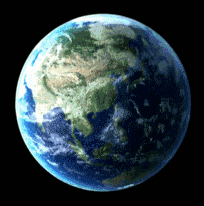"The
old division of the Earth and the Cosmos into objective processes in
space, time,
and mind in which they are mirrored is no longer a suitable starting
point
for understanding the universe, science, or ourselves."(1)

|
Like their precursors, modern cosmologists draw meaning from an embodied sky. In this spirit, Cosmography invokes seven planets in our celestial neighborhood; plus The Sun, The Moon; and Terra Incognita, with its "revelation of hidden things."(2)
Each planet is named
for a god the ancient Greeks brilliantly imagined. In the present
era, many of these gods have become symptoms of humanity's
cognitive and somatic distresses. In view of the Anthropocene's
terrestrial glare, Cosmography
is Presented In the
genre of Digital Literary Art, Cosmography includes my trope of
invagination: fragments
exhumed from the literary corpus and
transplanted into the body of
a living text. There
are images, some animations, and notes for each of 200
1- R.N. Anshen,
Introduction to B. Lovell, Emerging Cosmology. New York,
1981. Note:
Cosmography was designed on a 15" laptop with 1920X1080
resolution, and may not display correctly on smaller screens or at lower resolutions.
To Susan Alison Rowland: partner, wife, the love of my life.
Thank you: Colleagues and students,
Pacifica Graduate Institute.
©Joel Weishaus 2014-2018 |
